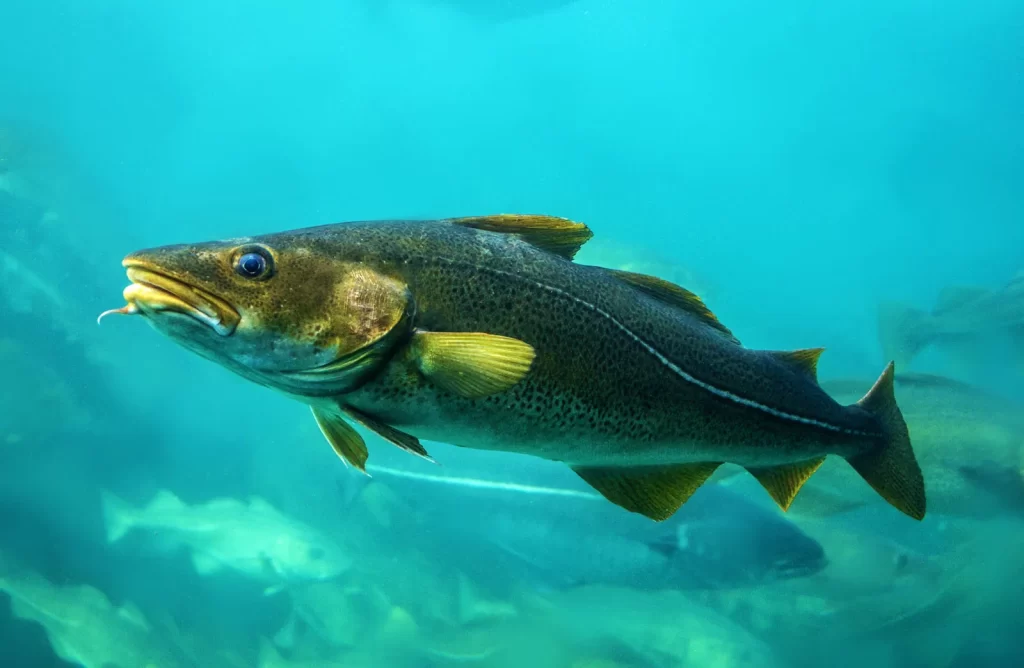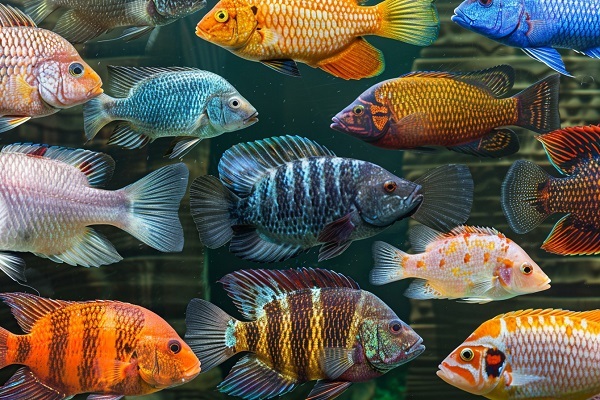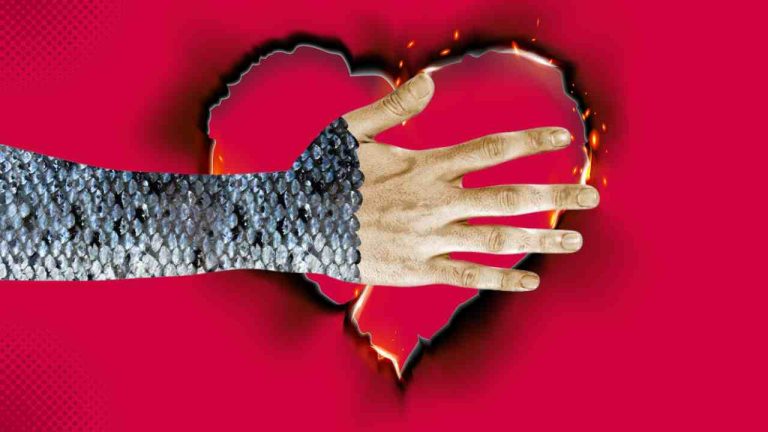In the ever-evolving world of medical science, researchers are constantly searching for innovative solutions to enhance healing and recovery. One such breakthrough gaining significant traction is the use of fish skin bandages in treating burn wounds. This unique method, which may seem unconventional at first glance, is bringing new hope to patients suffering from severe burns, thanks to its remarkable properties and efficacy.

The Science Behind Fish Skin Healing
Fish skin, particularly from species like cod, is rich in omega-3 fatty acids and proteins like collagen, which are essential for the skin’s natural healing process. Collagen, a key component of human skin, helps in wound healing by promoting cell growth and tissue regeneration. Omega-3 fatty acids, on the other hand, reduce inflammation and aid in faster recovery. These natural ingredients make fish skin an ideal candidate for treating severe skin injuries, including burns.
Moreover, fish skin is naturally free from diseases that can affect humans, reducing the risk of cross-contamination, which is a common concern with other biological skin substitutes derived from pigs or cows.
Years of Research Leading to Approval
Researchers across the globe have been diligently working on developing fish skin treatments for years, testing its safety and efficacy in clinical settings. The idea first took root in countries where fish is abundant, such as Iceland, where the company Kerecis spearheaded the development of fish-skin products for medical use. In 2021, this hard work paid off when the U.S. Food and Drug Administration (FDA) approved Kerecis’ fish-skin-based product for use in plastic and reconstructive surgery.
The FDA approval marks a significant milestone, highlighting the growing recognition of fish skin as a viable medical tool in modern healthcare. With this approval, fish skin bandages are now not only a theoretical solution but also a practical option for wound care professionals to use in hospitals and burn treatment centers.
A New Era of Healing
The introduction of fish skin bandages marks the dawn of a new era in burn wound treatment. As this innovative solution continues to evolve, it offers fresh hope for burn patients around the world, promising faster healing, fewer complications, and improved overall outcomes. With the FDA’s approval and the growing adoption of fish skin products in both human and veterinary medicine, it’s only a matter of time before fish skin becomes a staple in burn care and wound management globally.
Why Fish Skin Could Be the Future of Wound Care
Looking forward, it’s clear that fish skin bandages are more than just a temporary trend in medical innovation. As more clinical studies demonstrate their efficacy, and as the demand for better, more sustainable wound care options grows, fish skin is poised to play a significant role in the future of medical treatments.
One major advantage of fish skin bandages is their cost-effectiveness. Fish skins, which are typically a by-product of the fishing industry, are relatively inexpensive to produce compared to other bioengineered skin substitutes. This makes them an appealing solution for healthcare systems looking to reduce costs while maintaining high standards of care.
Furthermore, fish skin bandages are easy to store and apply, making them suitable for use in both high-tech hospitals and low-resource settings. This could have a profound impact on burn treatment in developing countries, where access to advanced medical supplies is often limited.
These fish are specifically chosen for their unique properties that make them ideal for burn treatment and wound healing. Let’s explore these varieties and the reasons for their selection.
1. Cod Fish (Gadus species)

Cod fish skin, particularly from Atlantic cod (Gadus morhua), has been extensively studied and used in medical applications. One of the prominent companies, Kerecis, has developed fish skin grafts using cod skin for burn wound healing and reconstructive surgeries.
Reasons for Using Cod Fish:
- Rich in Omega-3 Fatty Acids: Cod fish skin is naturally rich in omega-3 fatty acids, which play a critical role in reducing inflammation and promoting faster wound healing. Omega-3s also help in creating a favorable environment for tissue regeneration and reduce scarring.
- High Collagen Content: Cod skin contains a high amount of collagen, a protein that is essential for wound healing and tissue repair. Collagen helps to promote cell proliferation and aids in the regeneration of damaged skin tissues.
- Biocompatibility: Cod skin is biocompatible with human tissues, meaning it integrates well into the wound without causing adverse reactions. This is important to avoid complications such as infections or immune responses in burn patients.
- Sustainability and Availability: Cod is abundant in regions like Iceland and other North Atlantic waters. Utilizing cod skin is also environmentally friendly, as it repurposes what would otherwise be waste from the fishing industry. This makes the production of cod skin bandages economically viable.
2. Tilapia (Oreochromis species)
Tilapia fish skin has also gained significant attention in recent years, especially in regions like Brazil, where tilapia is widely farmed. It has been used in both human and veterinary burn treatments due to its beneficial properties.

Reasons for Using Tilapia Fish:
- High Collagen Levels: Similar to cod, tilapia skin contains a high concentration of type I collagen, which is a key factor in wound healing. Type I collagen promotes cell migration to the wound site, speeds up tissue regeneration, and facilitates the formation of new skin layers.
- Antimicrobial Properties: Tilapia skin has been found to have natural antimicrobial properties, which are particularly beneficial in reducing the risk of infections, one of the leading causes of complications in burn wounds. This property is crucial in preventing bacterial contamination and sepsis in burn patients, especially in low-resource environments where infection control may be limited.
- Elasticity and Flexibility: Tilapia skin is known for its flexibility and elasticity, which allows it to conform easily to different wound shapes and sizes. This adaptability ensures that the bandage can cover large or irregularly shaped burns, providing a protective barrier over the wound.
- Cost-Effective and Abundant: Tilapia is one of the most widely farmed fish in the world, making it an abundant and cost-effective option. This abundance makes tilapia skin an affordable alternative for developing countries where access to expensive wound care products may be limited.
3. Other Fish Varieties
While cod and tilapia are the most widely used, research into other fish species such as haddock, halibut, and salmon has been conducted, though their use in burn treatment is less common. These fish varieties also contain beneficial amounts of collagen and omega-3 fatty acids, but their availability and specific properties may vary.
Why Cod and Tilapia Are the Most Considered Fish:
- Availability and Sustainability: Both cod and tilapia are readily available and represent sustainable choices for medical applications. Cod is abundant in cold waters of the North Atlantic, while tilapia is farmed extensively in warmer climates around the world. Their availability ensures a steady supply for medical-grade fish skin production.
- Optimal Collagen and Omega-3 Content: The high collagen content, combined with omega-3 fatty acids in cod and tilapia skin, accelerates the healing process. These components reduce inflammation, promote tissue regeneration, and protect the wound from infections, making them ideal for treating severe burns.
- Biocompatibility: Fish skin from cod and tilapia has been shown to be highly biocompatible with human tissues. It integrates well with the wound bed and does not trigger adverse immune responses, which is crucial for preventing complications in burn patients.
- Cost-Effectiveness: Given that both cod and tilapia are by-products of the fishing and aquaculture industries, their skins are relatively inexpensive compared to other skin substitutes derived from mammals. This cost advantage makes fish skin bandages a practical solution, particularly in low-resource settings and developing countries where burn care costs are a significant concern.
- Ease of Application: Fish skin bandages are easy to apply and maintain, making them suitable for use even in healthcare systems with limited infrastructure. They can be stored at room temperature, unlike synthetic skin grafts, which often require refrigeration or other storage conditions.
Analyzing the global recorded deaths due to severe burns over the past five years provides insights into the prevalence and geographical distribution of burn-related fatalities. Burn injuries, especially in low-income and developing countries, remain a significant public health issue. Let’s delve into the facts and trends observed between 2019 and 2023.
1. Global Overview of Burn-Related Deaths
According to data from the World Health Organization (WHO) and other health organizations, burns are one of the leading causes of accidental injury and death worldwide. Here are some key trends observed over the past five years:
- Annually, over 180,000 deaths occur globally due to severe burns. The majority of these deaths take place in low- and middle-income countries.
- The highest number of deaths due to burns is seen in South-East Asia, Africa, and parts of the Western Pacific region, where access to quality burn care is limited, and fire hazards are more common.
- Women and children are disproportionately affected, especially in regions where cooking with open flames or using kerosene lamps is prevalent.
2. Breakdown of Burn Deaths by Year (2019-2023)
- 2019: Approximately 176,000 deaths were recorded globally, with developing countries contributing to nearly 95% of these fatalities. Countries such as India, Nepal, and Bangladesh saw a higher proportion of female burn deaths due to traditional cooking practices.
- 2020: This year witnessed an uptick in burn-related deaths, with the number rising to 182,000. The increase was partly attributed to lockdown measures during the COVID-19 pandemic, where prolonged home confinement led to higher rates of domestic accidents involving fire. Health systems already burdened by the pandemic struggled to provide adequate burn care.
- 2021: Burn-related deaths remained consistent with the previous year, with around 180,000 deaths. The introduction of new treatments like fish skin bandages and enhanced burn care units in some countries helped stabilize death rates. However, countries like Ethiopia and Nigeria continued to report a high number of fatalities due to a lack of resources and burn care facilities.
- 2022: The number of deaths due to burns was slightly reduced, totaling 174,000 deaths. Global awareness campaigns around fire safety and the increased use of innovative treatments played a role in mitigating burn deaths. Despite the reduction, the burden remained high in regions like South-East Asia and Sub-Saharan Africa.
- 2023: Preliminary estimates suggest burn-related deaths remained around 175,000 globally. Although the number appears to be plateauing, the disparity between high-income and low-income countries remains stark. In high-income countries, access to advanced medical care, better safety regulations, and early interventions keep the death rates significantly lower.
3. Key Factors Contributing to Burn-Related Deaths
Several factors contribute to the high incidence of burn-related deaths globally:
- Limited access to medical care: In many developing nations, a lack of specialized burn units and trained medical professionals delays treatment, leading to complications and increased mortality.
- Fire hazards in domestic settings: The use of open flames for cooking and heating, along with the absence of fire safety measures, increases the risk of burns, especially in densely populated areas.
- Workplace and industrial accidents: In some countries, unsafe working conditions, especially in factories and industries handling flammable materials, contribute significantly to burn injuries.
- Inadequate burn prevention programs: Many low-income countries lack robust public health programs focused on fire safety and burn prevention, further exacerbating the problem.
4. Geographical Disparities
- South-East Asia: Countries in this region consistently report some of the highest burn-related mortality rates. In India alone, thousands of women and children suffer fatal burns annually, often from kitchen-related accidents or unsafe living conditions.
- Sub-Saharan Africa: Due to poor infrastructure and limited healthcare access, burn victims in this region face a high risk of infection and complications. Access to burn care is scarce, leading to an inflated mortality rate.
- High-income countries: While burn injuries are still common, fatalities in countries like the United States, Canada, and parts of Europe are much lower, largely due to well-established emergency care systems, burn units, and effective public safety campaigns.
5. Burn Care Advancements and Challenges
- Innovative Treatments: The introduction of advanced treatments, such as fish skin bandages, synthetic skin grafts, and bioengineered skin substitutes, has improved the recovery rate of burn victims and reduced complications in regions with access to these technologies.
- Challenges in Low-Income Countries: Despite these advancements, many low-income nations continue to struggle with the basics of burn care, such as clean water for wound cleaning, sterile environments, and antibiotics to prevent infections. As a result, mortality rates remain high.
The recent development of fish skin bandages offers a groundbreaking solution that could significantly reduce these fatalities, especially in low-resource settings.
Connecting the Burn Mortality Rates with Fish Skin Innovation
Over the past five years, burn-related deaths have remained alarmingly high, particularly in South-East Asia, Sub-Saharan Africa, and other developing regions. The primary contributing factors include:
- Limited access to advanced medical care: Many burn victims die from complications such as infection, fluid loss, and inadequate wound healing due to the lack of proper healthcare infrastructure.
- Cost of treatment: Conventional burn treatments, including skin grafts and advanced wound care products, are often prohibitively expensive in low-income settings.
- Lack of specialized care: Few burn care units or trained professionals are available to treat severe burn cases in rural or economically disadvantaged areas.
The Potential Impact of Fish Skin Bandages in Reducing Burn Deaths
Fish skin bandages, particularly those made from species like cod, have the potential to address many of these challenges. Here’s how:
- Enhanced Healing Capabilities Fish skin, rich in collagen and omega-3 fatty acids, accelerates the wound healing process. In developing nations where infections and prolonged healing times often lead to fatal complications, the use of fish skin bandages can help reduce the risk of infections, improve wound recovery, and prevent sepsis — a common cause of death in untreated or poorly treated burn victims.
- Cost-Effective Solution Fish skin bandages offer a cost-effective alternative to synthetic skin grafts or other traditional treatments. Since fish skin is a by-product of the fishing industry, it is relatively inexpensive to produce and distribute, making it accessible for use in low-income settings where traditional treatment methods are often unavailable or unaffordable.
- Reduced Dependence on Advanced Infrastructure Unlike synthetic skin grafts or high-tech treatments that require well-equipped medical facilities, fish skin bandages can be applied in low-resource environments. This makes it an ideal solution for regions with limited healthcare infrastructure, as fish skin bandages are easy to store, apply, and maintain without requiring advanced equipment or highly specialized skills.
- Promoting Wound Coverage and Pain Relief Fish skin bandages not only promote healing but also provide a natural barrier that protects the wound and reduces pain. In developing countries, where patients may lack access to pain management and proper wound care, this dual benefit is critical for improving both short-term recovery and long-term survival.
- Culturally and Environmentally Sustainable Since fish is a common food source in many developing regions, there is less resistance to the use of fish-based products in medical treatment compared to animal-derived alternatives, such as pig or cow skin. Additionally, the use of fish skin aligns with sustainable practices, repurposing waste from the fishing industry into life-saving medical products, which can be crucial for countries focused on economic and environmental sustainability.
Predicting the Impact on Death Rates in Developing Nations
- Reduction in Infection-Related Deaths: Infections are one of the leading causes of burn-related deaths in developing countries. By providing an antimicrobial and healing-promoting barrier, fish skin bandages can drastically reduce the incidence of infections, thereby saving lives that would otherwise be lost due to septic complications.
- Increased Accessibility to Burn Care: As fish skin bandages become more widely available, even in remote or underserved areas, they will offer burn victims access to a previously unaffordable and inaccessible treatment. This widespread availability is likely to reduce burn mortality, especially in rural regions where access to healthcare is minimal.
- Potential to Scale Across High-Burden Regions: With proper distribution networks and support from international health organizations, fish skin bandages could be scaled to reach the most at-risk populations in South-East Asia, Sub-Saharan Africa, and other regions with high burn mortality rates. The scalable nature of this solution positions it to make a significant impact in reducing global burn-related deaths.
- Complementing Public Health Campaigns: Fish skin bandages, when combined with fire safety education and burn prevention initiatives, can further reduce the incidence of severe burns in developing countries. This holistic approach — prevention combined with effective treatment — will create a more comprehensive strategy for reducing both burn injuries and fatalities.
The Future: Saving Lives in Developing Nations
In developing countries, where the burden of burn injuries is disproportionately high and healthcare systems are often under-resourced, fish skin bandages represent a transformational innovation. By addressing key challenges such as cost, accessibility, and the speed of healing, this treatment can be a game-changer in reducing burn-related deaths. As awareness grows and production scales up, we can expect to see a significant reduction in burn mortality rates, especially among the most vulnerable populations.
In summary, fish skin bandages have the potential to dramatically lower burn-related fatalities in developing nations by offering an affordable, effective, and easily accessible treatment option. Through this innovation, countless lives can be saved, bringing hope to burn victims and their families across the globe.
Read more: Google’s Race to Zero Emissions Hits a Roadblock: Can Tech Fix the Problem it Created? | Brain Drain or Brainy Boost? The AI Paradox in Education | Beyond Science Fiction: How Your Digital Twin is Reshaping Healthcare

